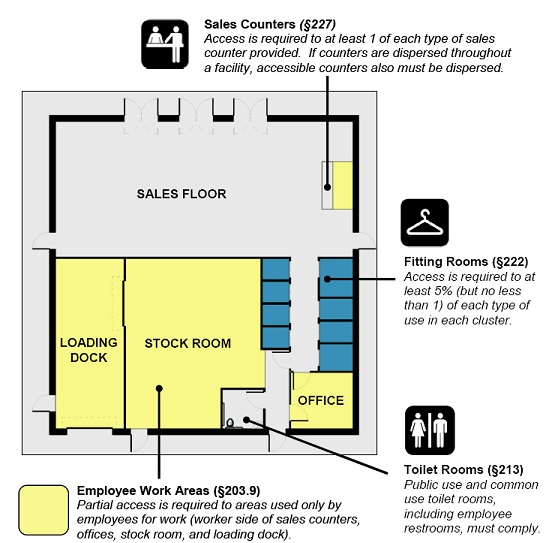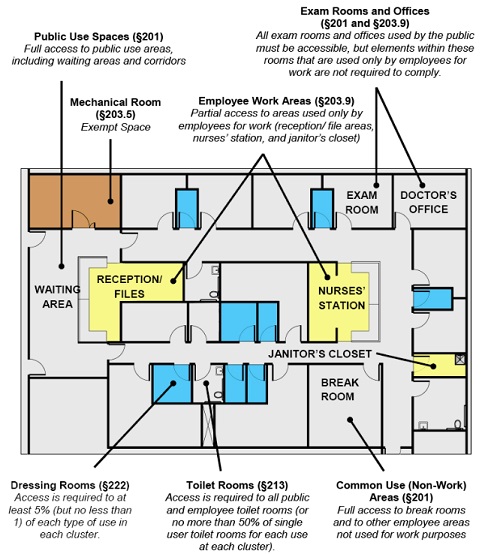Application [§201]
The ADA Standards apply to the various types of facilities subject to the ADA, from simple structures to complex, multi-building sites such as university campuses and airports. Requirements in the standards apply to both exterior and interior spaces and elements provided on a site, usually without distinction. Provisions for parking, for example, apply equally to exterior lots and to parking garages. The standards cover permanent facilities and temporary facilities (other than those used in construction), such as reviewing stands, stages, portable toilets, and temporary classrooms.
In new construction, all areas must be fully accessible, including multiple spaces of the same type, unless otherwise specified. Areas not required to be fully accessible include:
Example: Retail Facility
This example of a retail facility shows how scoping requirements for certain elements and spaces (sales counters and fitting rooms) apply and indicates employee work areas.
Exception Based on Structural Impracticability in DOJ’s 2010 ADA Standards and DOT's ADA Regulations
DOJ’s 2010 ADA Standards and DOT's ADA regulations specify that full compliance is not required in new construction in rare circumstances where unique characteristics of terrain make the incorporation of accessibility features “structurally impracticable.” In such a case, the new construction requirements apply except where the responsible entity can demonstrate that it is structurally impracticable to meet those requirements. This exception is very narrow and should not be used in cases of merely hilly terrain.
Even in those circumstances where the exception applies, portions of a facility that can be made accessible must still be made accessible. In addition, access must be provided for individuals with other types of disabilities, even if it may be structurally impracticable to provide access to individuals who use wheelchairs.
This exception is found in DOJ’s 2010 Standards at §35.151(a) for title II and §36.401(c) for title III and in DOT’s ADA regulations at §37.41(b).





User Comments/Questions
Add Comment/Question